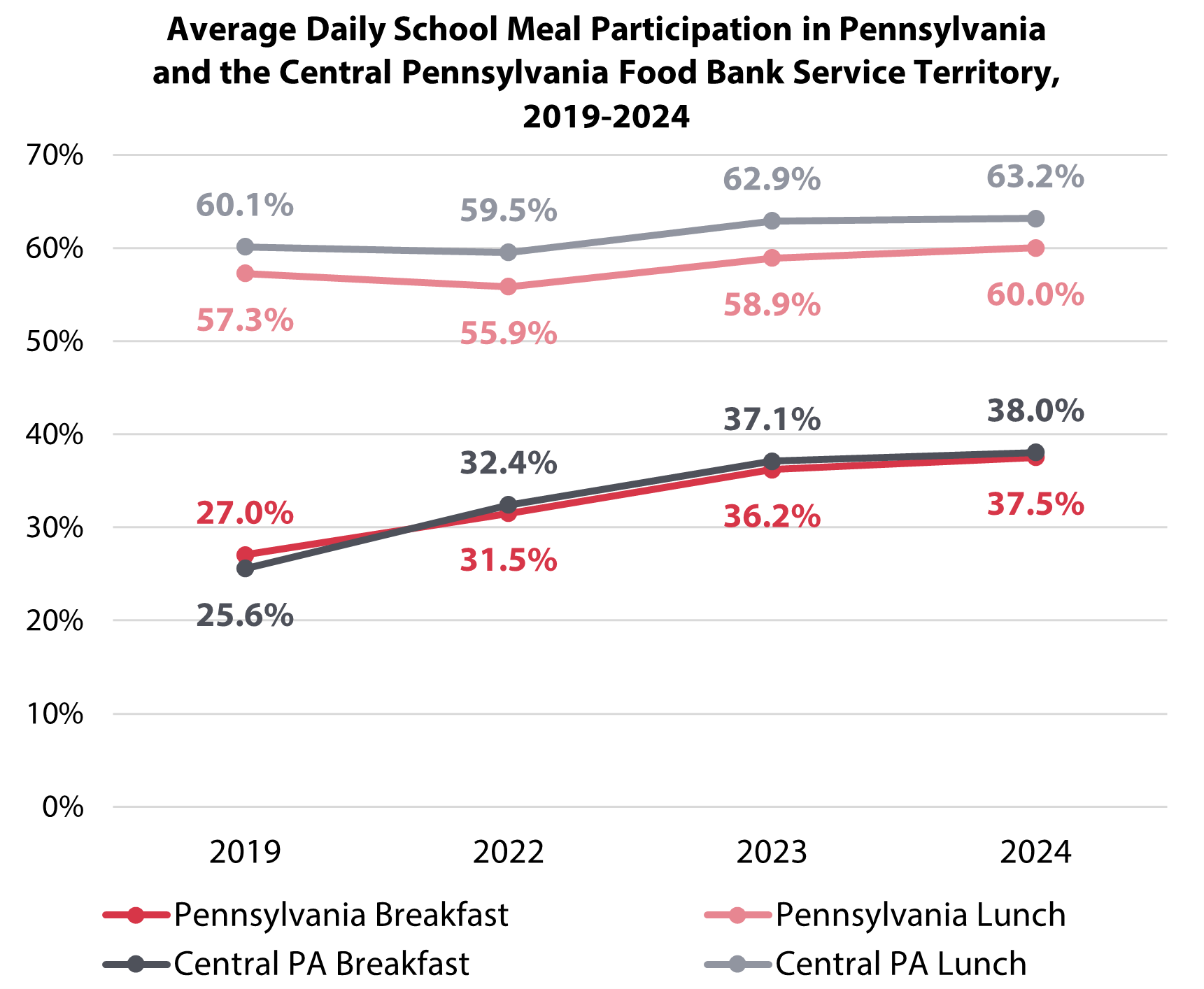By Morgan Flood, Policy Research Specialist
In October 2022, Governor Wolf announced an initiative that offers breakfast to all Pennsylvania students, without requiring their families to complete any paperwork or meet any income eligibility standards. Since then, Governor Shapiro has continued and expanded the program, which now also offers free lunch to more than 22,000 students who would typically only qualify for reduced-price lunch federally.
Among all public schools across the state, the average proportion of students who eat breakfast at school has increased from 27.0% in 2019 (the last year without universal breakfast for which comparable data is available) to 37.5% in 2024. In total, almost 40% more Pennsylvanian children received breakfast at school this year than five years ago.
In public schools in Central Pennsylvania Food Bank’s service territory, participation grew even more over the same time frame, leaping almost 50%, from 25.6% in 2019 to 38.0% in 2024. Central Pennsylvania public schools now slightly outpace their peers across the Commonwealth in breakfast participation.

It is important to note that lunch participation grew only a small amount between 2019 and 2024, at 4.8% statewide and 5.2% in Central Pennsylvania. The starkly different trends between the two meal programs are compelling evidence that the main driver of the increase in breakfast participation in the last few years is its universality, as lunch eligibility has not expanded to nearly the same degree.
The Commonwealth’s investment in children has clearly paid off in terms of increasing breakfast participation, but it will bear dividends far beyond simply ensuring children start the day with a meal. Research shows that eating breakfast at school is associated with a number of positive outcomes for students, including higher academic achievement and better attendance and behavior. Since breakfast participation has risen substantially statewide, it could be expected that there has been statewide improvement in these metrics as well.
Even with the massive growth seen in the last few years, participation in breakfast is still only about three fifths that of participation in lunch, and additional opportunities to maximize the value of universal school breakfast for Pennsylvania students remain. To maximize the value of the Commonwealth’s current investment in students, schools should consider using other tools to increase participation – these can include alternative service models like grab and go breakfast, breakfast after the bell, and breakfast in the classroom; creative promotional strategies like raffles and contests; and participation in the Governor’s School Breakfast Challenge.
